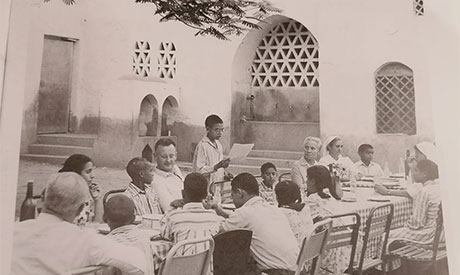
Garagous, The Story of 21 Years of Jesuit and Brothers 1946-1967, by Father William Sedhom, published in 2018.
The sad news of the closure of the pottery factory of Garagous, in Qous village, Qena governorate, stirred a lot of pain and raised many questions.
The factory that was established in 1966 by the Jesuit and Brothers in Qous serves as one of Egypt’s most authentic practice of intangible heritage, to say the least.
“A court order with an eviction notice came out some eight month ago and we have been appealing since then," explained Nour Bastawi, the lawyer representing the artisans of the pottery factory.
“The court order was issued because the archbishopric filed a lawsuit against the artists who were leasing the factory, claiming that they were demolishing the old pottery furnaces, and this is not true. They have switched the fuel used from solar to natural gas and inserted it in the old furnaces,” he told Ahram Online.
Bastawi added that the adjustment was implemented by the Handicraft Chamber of Egypt to ensure the factory remained safe and was not subject to demolition.
“However, the implementation of the court order came without prior notice and the result is that today about 20 families have lost their income and the artisans don't have access to their tools. How can this possibly happen to people who represent Egypt’s heritage, whose handicrafts are worldwide famous, and who have just trained 25 young people of Garagous’ finest on the trade to ensure sustainability?”
Garagous pottery is a reflection of traces of Naqada’s predynastic civilisation in Egypt (4000-3000 BC). In its shades of blue and green, this unique pottery reveals also layers of ancient Egyptian, Coptic, and Islamic motifs. The biggest value it represents is the passionate hands that mastered the trade since they were children.
According to the book titled Garagous, The Story of 21 Years of Jesuit and Brothers 1946-1967, by Father William Sedhom, published in 2018, the idea of establishing a pottery workshop in the village of Garagous was formulated in 1946 as part of the human development project of the Jesuit Brother’s Association.
Father Stephane Montgolfier and Father Maurice Fenoye launched their human development journey in Garagous, along with some nuns from Notre Dame des Apotre.
Among the people they consulted with were Tharwat Okasha, the late renowned Egyptian thinker and one-time culture minister; the late Hassan Fathy, a famous architect; late writer Ahmed Ragab, and late architect Wissa Wassef.
Their efforts materialised into a complex housing, a school, church, library, youth centre, and a workshop/factory for pottery and tapestry making and was conceptualised and built using Fathy’s unique and sustainable architecture.
“I worked in the factory right after I finished school in 1963 and my uncles were the ones who were building it with architect Hassan Fathy. I have spent all my life in this factory,” laments Fawaz Sedhom, one of the oldest artisans of Garagous factory.
“We are currently exhibiting our products in Alexandria and we need to access our goods in the factory,” Sedhom adds.
Sedhom represents some 20 families who have been practising this trade for decades and are now facing an unknown future.
“The eviction is catastrophic. The factory represents a great part of Egypt’s heritage that should be saved,” noted Father William Sedhom, director of the Jesuit Culture Centre, Cairo.
Meanwhile, the factory remains closed, for the first time in its history, rendering the fate of the people who dedicated their life to working there unknown.
Short link: